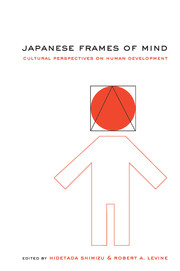Book contents
- Frontmatter
- Contents
- Notes on the Contributors
- Preface: Japan as Front Line in the Cultural Psychology Wars
- Introduction: Japanese Cultural Psychology and Empathic Understanding: Implications for Academic and Cultural Psychology
- PART ONE MORAL SCRIPTS AND REASONING
- PART TWO MOTHER AND CHILD AT HOME
- PART THREE GROUP LIFE: THE YOUNG CHILD IN PRESCHOOL AND SCHOOL
- 5 Learning to Become Part of the Group: The Japanese Child's Transition to Preschool Life
- 6 Peer Culture and Interaction: How Japanese Children Express Their Internalization of the Cultural Norms of Group Life (Shudan Seikatsu)
- PART FOUR ADOLESCENT EXPERIENCE
- PART FIVE REFLECTIONS
- Index
5 - Learning to Become Part of the Group: The Japanese Child's Transition to Preschool Life
Published online by Cambridge University Press: 23 July 2009
- Frontmatter
- Contents
- Notes on the Contributors
- Preface: Japan as Front Line in the Cultural Psychology Wars
- Introduction: Japanese Cultural Psychology and Empathic Understanding: Implications for Academic and Cultural Psychology
- PART ONE MORAL SCRIPTS AND REASONING
- PART TWO MOTHER AND CHILD AT HOME
- PART THREE GROUP LIFE: THE YOUNG CHILD IN PRESCHOOL AND SCHOOL
- 5 Learning to Become Part of the Group: The Japanese Child's Transition to Preschool Life
- 6 Peer Culture and Interaction: How Japanese Children Express Their Internalization of the Cultural Norms of Group Life (Shudan Seikatsu)
- PART FOUR ADOLESCENT EXPERIENCE
- PART FIVE REFLECTIONS
- Index
Summary
How do the Japanese become group-oriented? Contemporary anthropologists agree that cultural behavior and attitudes are a product of socialization rather than heredity or accident. Yet the actual experiences through which Japanese children learn to be group-oriented have not adequately been described.
Most descriptions of Japanese society have generally assumed that group behavior and attitudes are learned in the Japanese home. Children learn how to interact with others by practicing with their siblings and parents in the “small society” of the family and through observing how their parents interact with outsiders. As the child matures, this behavior becomes elaborated and generalized to a larger social setting.
Although this process undoubtedly occurs to some extent in Japan, Japanese popular wisdom does not view child development in this way. For Japanese children, just as for adults, the home and the outside world are very different settings which require different interpersonal behavior and attitudes. This gap between uchi and soto frequently has been treated in descriptions of Japanese adult society.
Uchi and soto differ for Japanese children just as they do for adults. There is a profoundly important difference between the way that children should feel and behave at home with mother and the way that they should behave in preschool and elementary school. Because the two environments are so different, Japanese believe that it is the school's responsibility to socialize children in group behavior.
- Type
- Chapter
- Information
- Japanese Frames of MindCultural Perspectives on Human Development, pp. 143 - 169Publisher: Cambridge University PressPrint publication year: 2002
- 1
- Cited by

